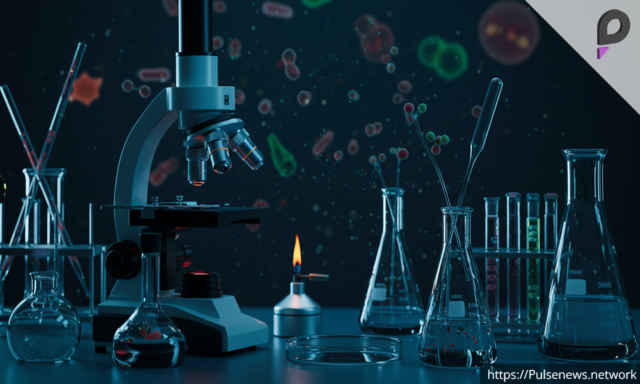Microbiology, the study of microscopic organisms such as bacteria, viruses, fungi, and protozoa, has a fascinating history. The history of microbiology spans from ancient speculations about unseen entities causing diseases to modern genetic engineering and biotechnology. The field has revolutionized medicine, industry, and agriculture, making it one of the most crucial branches of science.
Early Theories and the Concept of Microorganisms
Before the discovery of microbes, people attributed diseases to supernatural forces, imbalances in bodily fluids, or environmental factors. However, some ancient scholars suspected the existence of tiny organisms as the cause of diseases.
Ancient Theories and Early Speculations
- Hippocrates (460–370 BCE): The Greek physician proposed the Humoral Theory, which suggested that diseases were caused by imbalances in bodily fluids (blood, phlegm, black bile, and yellow bile).
- Marcus Terentius Varro (116–27 BCE): A Roman scholar, he suggested in his book De Re Rustica that tiny invisible creatures in the air and water might cause diseases, a remarkably advanced idea for his time.
Spontaneous Generation A Misconception
For centuries, the idea of spontaneous generation dominated scientific thought. This theory suggested that living organisms could originate from non-living matter. For example, people believed that maggots spontaneously appeared in decaying meat or that mice could emerge from dirty rags.
The Invention of the Microscope and the First Observations of Microorganisms
The invention of the microscope in the 17th century allowed scientists to explore the hidden world of microbes.
Robert Hooke (1635–1703) The First Observations of Cells
- English scientist Robert Hooke used a compound microscope to examine thin slices of cork.
- In 1665, he published his book Micrographia, in which he described the structures he observed and coined the term cell for the tiny compartments he saw in plant tissues.
- Although Hooke did not see bacteria, his work was a significant step toward microbiology.
Antonie van Leeuwenhoek (1632–1723)
- A Dutch tradesman and scientist, Antonie van Leeuwenhoek developed a single-lens microscope capable of magnifying objects up to 300 times.
- In 1674, he became the first person to observe and describe bacteria, protozoa, and sperm cells.
- He called these microorganisms animalcules.
- Over his lifetime, Leeuwenhoek wrote over 500 letters to the Royal Society of London, describing his observations of tiny creatures found in water, teeth scrapings, and other samples.
His discoveries laid the foundation for microbiology, even though the importance of microbes was not yet fully understood.
The End of Spontaneous Generation and the Rise of Germ Theory
The debate over spontaneous generation continued until the 19th century when several experiments disproved it.
Francesco Redi (1626–1697) The First Experimental Challenge
- Redi, an Italian physician, conducted an experiment in 1668 using meat in jars.
- He showed that maggots only appeared in uncovered jars where flies could lay eggs, disproving spontaneous generation for larger organisms.
Lazzaro Spallanzani (1729–1799) Boiling Experiment
- Spallanzani boiled broth in sealed flasks and observed that no microorganisms grew, contradicting spontaneous generation.
- Critics argued that air was necessary for life, so his experiment did not convince everyone.
Louis Pasteur (1822–1895) The Final Blow to Spontaneous Generation
- French scientist Louis Pasteur conducted his swan-neck flask experiment in 1861.
- He boiled broth in flasks with long, curved necks that allowed air but prevented dust and microbes from entering.
- The broth remained sterile, proving that microbes came from the environment, not from spontaneous generation.
Pasteur’s work established the germ theory of disease, which states that microorganisms cause diseases.
The Birth of Medical Microbiology
With the acceptance of germ theory, scientists began linking microbes to specific diseases.
Robert Koch (1843–1910) Discovering Disease-Causing Bacteria
- A German physician, Robert Koch developed Koch’s postulates, a set of criteria to prove that a specific microorganism causes a disease.
- He identified the bacteria responsible for:
- Anthrax (Bacillus anthracis)
- Tuberculosis (Mycobacterium tuberculosis)
- Cholera (Vibrio cholerae)
His contributions earned him the Nobel Prize in Medicine in 1905.
Joseph Lister (1827–1912) Antiseptic Surgery
- British surgeon Joseph Lister introduced antiseptics to surgery.
- In 1867, he used carbolic acid (phenol) to sterilize surgical instruments and wounds, dramatically reducing post-surgical infections.
The Golden Age of Microbiology (Late 19th to Early 20th Century)
During this period, many pathogens were discovered, and vaccines and antibiotics were developed.
Edward Jenner (1749–1823) The Father of Vaccination
- In 1796, Jenner discovered that cowpox infection protected against smallpox.
- He developed the first vaccine, laying the foundation for immunology.
Alexander Fleming (1881–1955) The Discovery of Antibiotics
- In 1928, Fleming discovered penicillin, the first antibiotic, which revolutionized medicine by treating bacterial infections.
Modern Microbiology and Biotechnology
Recent advancements have expanded microbiology into genetics, biotechnology, and medicine.
DNA and Molecular Microbiology
- Watson & Crick (1953): Discovered the double-helix structure of DNA.
- Carl Woese (1977): Discovered the Archaea domain, redefining microbial classification.
Genetic Engineering and CRISPR
- Genetic engineering allows scientists to modify microbes for medical and industrial use.
- CRISPR technology, developed in the 2010s, enables precise gene editing, revolutionizing microbiology.
Conclusion
The history of microbiology showcases humanity’s journey from ignorance to understanding the microbial world. From the early speculations of unseen creatures to modern breakthroughs in biotechnology, microbiology history has played a vital role in medicine, agriculture, and industry. As new discoveries continue, microbiology will remain at the forefront of scientific innovation, shaping the future of healthcare, genetics, and environmental science.











